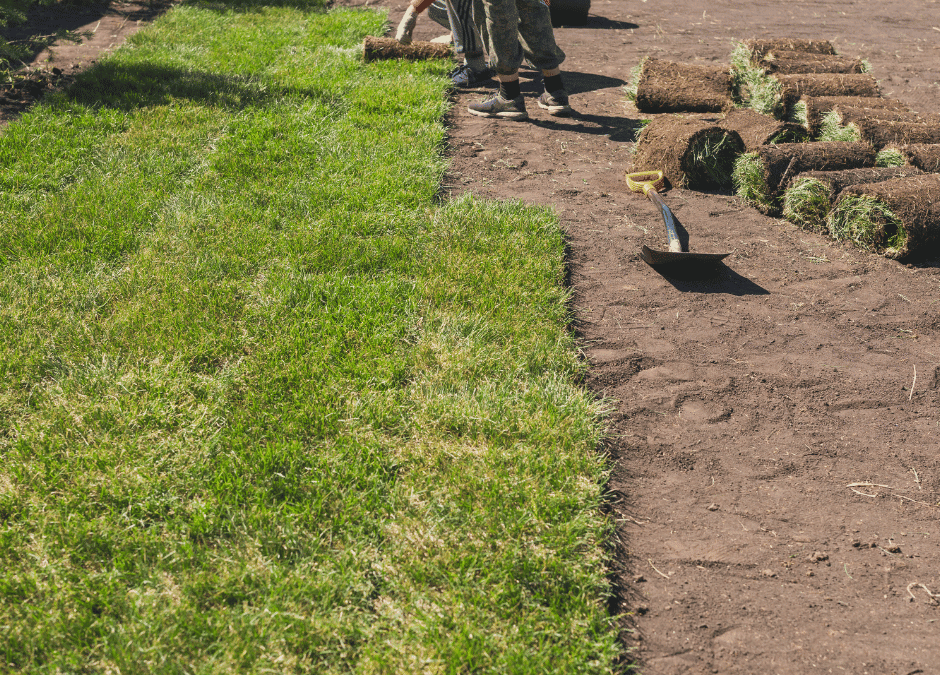Transform your landscape instantly with high-quality sod from Douglasville Sod Installation. Understanding how sod grows and establishes can significantly enhance your lawn’s success. Our guide offers insights into selecting, installing, and maintaining sod to achieve a lush, green lawn quickly. With expert advice from Douglasville Sod Installation, you can enhance your property’s appeal and increase its value. Let’s explore the essential steps for a successful sod installation that ensures lasting beauty and functionality.
What is Sod?
Sod is pre-grown grass that comes with a soil base, held together by roots or a thin material, ready for installation. It provides an immediate green lawn, bypassing the growth time required from seeding. This makes sod an ideal solution for quick landscape enhancement and erosion control. Sod establishes faster than seeded grass, offering a uniform and attractive appearance soon after installation. It’s perfect for those looking to quickly enjoy a mature and dense lawn.
The Science Behind Sod Growth
Sod growth is fueled by photosynthesis in the grass blades and nutrient uptake through the roots. Once laid, sod needs to quickly integrate with the soil in your garden to form a seamless and durable turf. The key to successful sod integration is ensuring rapid root growth. This biological process helps the sod establish itself as part of your lawn’s ecosystem, making it a permanent fixture of your landscape. Understanding this growth process is essential for proper sod care and maintenance.
Preparing Your Yard for Sod Installation
Preparing your yard for sod installation is crucial for ensuring the sod’s success. Start by removing any existing grass, weeds, and debris to create a clean slate. Level the soil to eliminate low spots where water could collect. Enriching the soil with organic matter or a quality topsoil mix can improve its fertility and water retention, providing an ideal base for the sod. Proper preparation helps the sod roots establish more quickly and grow into a healthy, lush lawn.
The Best Time to Install Sod
The best time to install sod is during mild weather conditions, typically in early spring or early fall. These seasons offer moderate temperatures and sufficient rainfall, which help the sod root effectively without the stress of extreme heat or cold. Installing sod during these times maximizes the growth potential of the grass, ensuring it becomes well-established before the onset of harsh weather. Avoiding the summer heat and winter frost is key to preventing the young roots from dying off. This timing helps ensure your new sod develops into a robust and resilient lawn.
Step-by-Step Guide to Sod Installation
To properly install sod, begin by measuring your yard and calculating the amount of sod required. Lay the sod strips end to end, making sure to press down firmly to eliminate air pockets and ensure good root contact with the soil. It’s important to stagger the seams in a brick-like pattern to prevent lines of weakness in your new lawn. Using a roller after installation helps ensure the sod makes good contact with the underlying soil. Following these steps carefully will promote faster rooting and better water retention, which is essential for healthy sod growth.
Watering and Fertilizing Your New Sod
Proper watering and fertilizing are crucial for new sod care. Initially, water the sod daily to keep the soil moist but not soggy, encouraging deep root growth. As the roots are established, gradually reduce the watering frequency to encourage stronger root systems. Apply a starter fertilizer at installation to help establish roots and follow up with a maintenance fertilizer after six weeks to promote growth. Consistent care in these early stages will lead to a more durable and lush lawn.
Common Challenges in Sod Establishment
New sod can face several challenges, such as drying out, pest infestations, or disease. Maintaining consistent moisture is crucial, but avoid overwatering, which can lead to fungal diseases. Watch for signs of pests and diseases early on to address them before they cause significant damage. Proper mowing practices and occasional aeration also help prevent problems by improving air and nutrient flow to the roots. Addressing these challenges promptly ensures your sod remains healthy and vibrant.
Long-Term Maintenance of Your Sod Lawn
Long-term maintenance is essential to keep your sod lawn looking its best. Regular mowing at the recommended height for your grass type encourages dense growth and reduces weed competition. Deep, infrequent watering fosters a robust root system, which is essential for drought resistance. Fertilize according to soil test recommendations to provide necessary nutrients without overfeeding. Seasonal care, including aeration and overseeding, can revitalize your lawn and maintain its lush, green appearance.
Contact Us for Expert Sod Installation Services
A well-installed sod lawn can transform your outdoor space into a vibrant and lush area. With a, you gain access to top-quality sod and expert installation services that ensure your lawn is beautiful and durable. Our professionals are dedicated to providing you with the best solutions tailored to your specific landscape needs. Contact us to learn more about how we can help you achieve a perfect green lawn with minimal hassle. Let us take the guesswork out of sod installation and maintenance for you.
